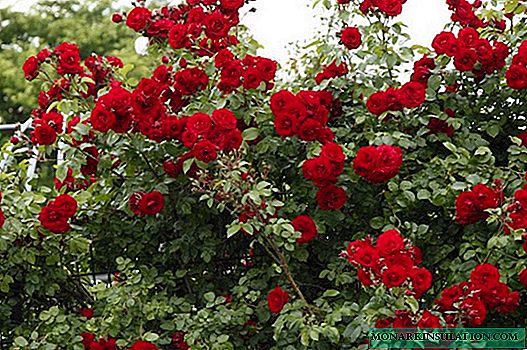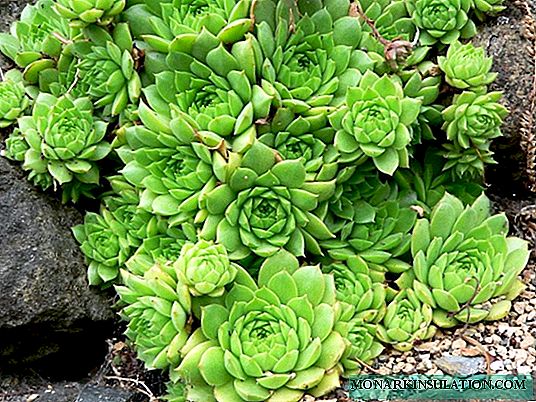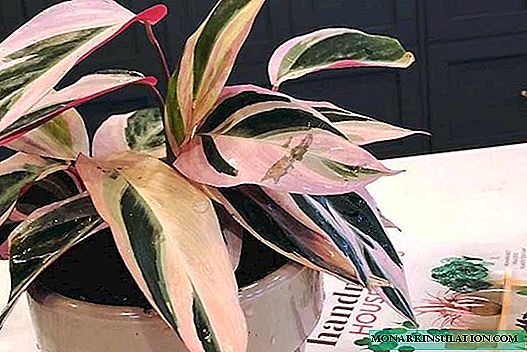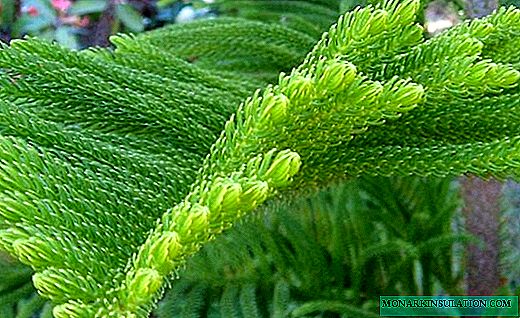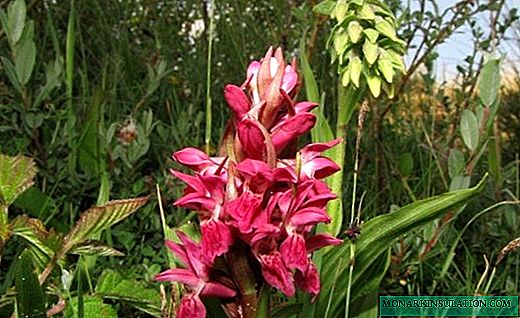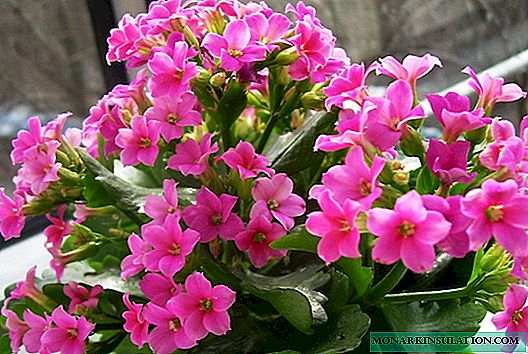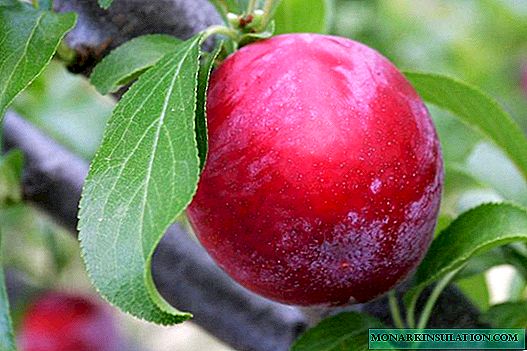
European plum Opal is not very well known to gardeners in Russia. There is no information about her in the State Register. But the variety is interesting, so let’s familiarize it with gardeners who are faced with the choice of a suitable option for their garden site.
History and varietal characteristics of Opal plum
Like many European varieties, a rather old plum variety Opal of Swedish selection is not in the State Register of the Russian Federation. Crossing plums of the varieties Renkloda Ulena and Early Favorite, breeders set themselves the task of obtaining a highly resistant plum variety for cultivation on poor soils in harsh climates. And I must say that they succeeded, although in frosts down to -30 ° C the tree sometimes freezes, however, it recovers quite quickly. The variety is immune to major fungal diseases; no information was found on the degree of pest infestation. Although the variety is not regionalized, possible regions of cultivation can be judged by the place of cultivation of its seedlings. Found nurseries offering Opal plum in the Moscow region (Yegoryevsky nursery), as well as reviews of gardeners in the Moscow region growing this variety. From this we can make a logical conclusion that the Opal plum can grow and bear fruit in the middle lane. No information was found on the drought tolerance of the variety.
The tree turned out to be medium-tall, up to three meters high. Its crown is round, broad-conical, dense. Plum Opal, grafted on cherry plum seedlings, begins fruiting in the third year after planting, and grafted on Hungarian Wangeheim in the second year. Early flowering - usually the flowers bloom from mid-April to early May.

The Opal plum blooms early, even before the leaves are completely open.
Accordingly, fruit ripening occurs in late July - early August. Flower buds are laid on annual growths and fruit branches. Productivity of the variety is medium and irregular. According to various sources, from one tree receive from 30 to 65 kg of fruit. Moreover, with large yields, the fruits are smaller, their taste deteriorates.
The fruits of Opal plum are relatively small - their average weight is 20-23 grams, and the maximum weight reaches 30-32 grams. Their shape is rounded with a clearly visible abdominal suture. The skin is thin, but difficult to separate. In the immature state, it has a yellow-green color, and by the time of full maturity it becomes a bright violet-red and sometimes with an orange barrel. On the surface there is a gray waxy coating.

The fruits of Opal plum are relatively small - their average weight is 20-23 grams, and the maximum weight reaches 30-32 grams
The pulp is dense, fibrous, but very juicy. Its color is golden yellow. The stone is small; it separates well from the pulp. The taste of the fruit is sweet, with a slight acidity and a characteristic plum aroma. Tasting taste rating - 4.5 points. With high humidity during ripening, the fruits are prone to cracking. Transportability of fruits is good, but their shelf life, as well as other summer varieties, is small - they are stored in the refrigerator for no more than two weeks. The purpose of the variety is universal.
Opal self-fertility is high - it can be grown without pollinators. Moreover, he himself is a good pollinator for many varieties of plums (for example, for Bluefrey, President, Stanley and others). But it is noted that in the presence of plum varieties Pavlovskaya and Scarlet Dawn, as well as cherry plum Soneika, the yield and quality of the fruits of Opal improve.
Advantages and disadvantages of the variety
The positive qualities of Opal plum are:
- High winter hardiness.
- Resistance to fungal diseases.
- Compact tree.
- Unpretentiousness in leaving.
- Early maturity.
- Self-fertility.
- The variety is a good pollinator.
- Pleasant dessert taste of fruits.
- Universal purpose.
- Good transportability.
The negative sides of the variety are also present:
- Irregular fruiting.
- Chopping fruits during crop overload.
- Tendency to crack under high humidity.
- Short shelf life.
Planting plum varieties Opal
If the gardener has already had to plant plums, then with the Opal variety he will have no difficulties in this regard. All the rules that he followed during landing are applicable in this case. You can focus on some of the nuances that are most important for this plum:
- Since the variety sometimes freezes, it is better to place it on small southern or southwest slopes with natural protection from cold northern winds. In the first years after planting, young seedlings should be sheltered for the winter, especially in the northern regions of the middle lane.
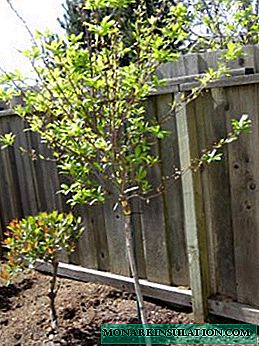
When planting a seedling near the fence, it will act as a natural defense against cold winds.
- When landing, a 3x4 m scheme should be applied (row spacing - 3 m, row spacing - 4 m).
- Do not plant in flooded and swamped areas.
The landing process itself is typical, we describe it briefly:
- In autumn, they buy seedlings (they are stored until spring in the basement or dug into the ground at the site) and prepare planting pits with a depth and diameter of 70-90 cm, filled with fertile soil. It is made from chernozem, peat, organic matter (humus or compost) and sand, taken in equal proportions.
- In early spring, when the buds on the trees are just starting to swell (this indicates the beginning of sap flow), they begin to plant.
- It is advisable to soak the roots of seedlings before planting for two to three hours in water. In this case, you can add growth stimulants and root formation, for example, Kornevin, Epin, Zircon, etc.
- In the landing pit, a hole is formed with a mound in the center, focusing on the size of the root system of the seedling. And also a wooden stake is driven in 10-12 cm from the center for the subsequent garter of a seedling to it.

In the planting pit, a hole is formed with a mound in the center, focusing on the size of the root system of the seedling, and a wooden stake is driven in 10-12 cm from the center for subsequent garter of the seedling
- A plant is planted, resting its root neck on the top of the knoll and spreading its roots along the slopes.
- Fill the hole with soil, while carefully compacting it. They monitor the location of the root neck - it should not be buried as a result. It is better to leave it 2-5 cm above the ground, so that after shrinkage of the soil it is at ground level.

The roots of a seedling are covered with fertile soil, making sure that the root neck is at ground level
- An earthen roller is used to chop water around the barrel with a chopper.
- Abundantly water the seedling.
- The stem is shortened to 80-100 cm above the soil.
Features of cultivation and subtleties of care
Like planting, care for the Opal sink does not require any special techniques or techniques. Here are just a few tips to help grow a healthy tree and get a good harvest:
- In dry periods, plum should be watered at least once or twice a week, ensuring constant soil moisture to a depth of 25-35 cm.
- 20-30 days before the fruit ripens (approximately from the beginning of July), watering is stopped to prevent cracking of the skin.
- The most suitable crown formation is in the form of a bowl or spindle.
- Since the variety is prone to thickening the crown, annually in the spring it needs to be thinned out by trimming the crosses, and also growing inwards, shoots and tops.

Since the Opal plum variety is prone to thickening the crown, it needs to be thinned out annually in the spring
- If an excessive number of ovaries is formed, normalization should be carried out by partially removing them.
All the above tips for caring for plum varieties of Opal are designed for cultivation in the middle lane, including in the suburbs.
Diseases and pests: the main types and solutions to the problem
Since the susceptibility of the variety to the attack of harmful insects is not mentioned in the sources, it can be assumed that this factor is not of great importance. And also given that the variety is resistant to fungal diseases, it is quite possible to grow it without the use of chemicals, ensuring the ecological purity of the products. In order to avoid possible problems in this regard, you should adhere to the standard rules for the implementation of preventive measures for plant protection. In short, this is:
- Collection and removal from the site of fallen leaves.
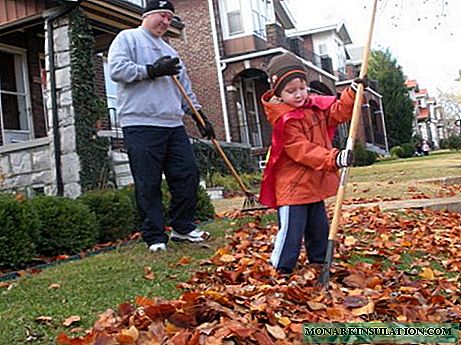
Fallen leaves must be collected and removed from the site
- Digging or plowing the soil around plants in late autumn to a depth of 20-25 cm.
- Whitewashing of the bark of trunks and thick shoots with a solution of slaked lime, to which 3% copper sulfate is added.
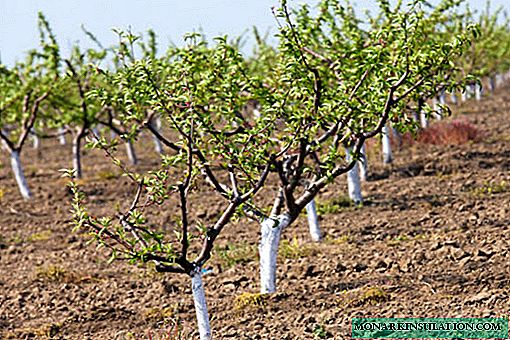
Tree stumps in autumn should be whitened with slaked lime solution
- Sanitary pruning of the crown (cutting of diseased, dry and damaged shoots).
- For prevention purposes, it is possible to carry out treatment with harmless biological preparations - Fitoverm, Fitosporin, Iskra-Bio, etc. They are used in accordance with the attached instructions.
The use of chemical plant protection products is resorted to only in cases of a specific infection with the disease or in the attack of a pest.
Gardeners reviews
Apparently, due to the low popularity of the variety, there are almost no reviews about it on the forums.
Opal must be grafted into the crown of winter-hardy plum, the same Tula black.
Amateur, Moscow Region
//forum.tvoysad.ru/viewtopic.php?t=562&start=30
At Opal, the fruits are very tasty with a special, unlike anything else flavor. But it was Opal that was hardest hit than other grades in VSTISP, and even in the Krasnodar Territory in the past (2006). G. Eremin spoke about this at the last lecture in MOIP.
Tamara, Moscow
//forum.tvoysad.ru/viewtopic.php?t=562&start=30
Spoiled residents of the southern regions are likely to choose more modern and "advanced" varieties. But in the middle lane and Moscow region, the Opal plum is quite suitable for growing, given that it has much fewer disadvantages than advantages. It can be a great addition to other, later varieties, while being a good pollinator for them.







